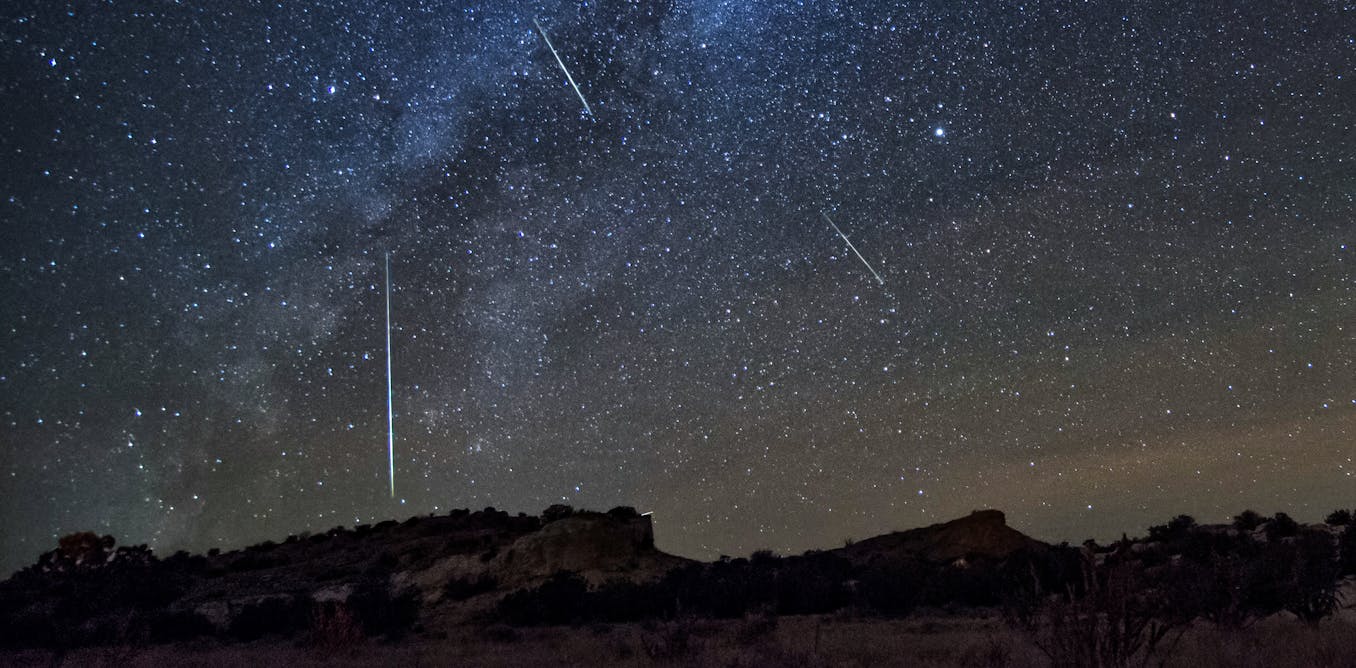
Published: October 21, 2023, 2:54 am AEDT
Author: Daniel Brown Lecturer in Astronomy, Nottingham Trent University
Introduction:
Throughout the year, there are different meteor showers, each with unique properties, offering stargazers opportunities to witness celestial wonders. In October, the spotlight is on the Orionids, one of the most famous and reliable meteor showers. This post will guide you on how to observe these mesmerizing celestial events, often known as shooting stars, as they grace the night sky.
Understanding the Orionids:
Shooting stars, often known as meteoroids, are not actually stars but rocky objects traveling through space. These meteoroids can range from the size of small pebbles and sand to rarer, larger objects. As Earth orbits the Sun, it occasionally encounters these meteoroids by chance, resulting in approximately 48 tonnes of material impacting our planet daily.
As these particles enter our atmosphere, they transform into meteors. The Orionids, with an average speed of about 61 km/s, burn up at high altitudes, creating brilliant streaks across the night sky.
Origins of Meteor Showers:
Meteor showers are not random encounters with meteoroids; they occur when Earth passes through denser regions of space debris left behind by comets orbiting the Sun. Comets, described as dirty snowballs composed of loose material held together by frozen gases, leave behind their debris as they travel. When Earth crosses paths with this debris, it results in spectacular meteor showers.
Each meteor shower is associated with a specific comet. The Orionids, for example, are intriguing not because of the sheer number of meteors but because they are linked to Halley's comet, the first recognized periodic comet with an orbital period of fewer than 200 years. Halley's comet completes an orbit every 75 years, and despite missing its closest approach in 1986, you can still witness its trail through the Orionids.
Skywatching Tips:
Watching meteor showers is an accessible and awe-inspiring activity that doesn't require specialized equipment. However, patience and favorable weather conditions are essential. Here are some tips to ensure a successful stargazing experience:
1. Timing: Select the right time for your meteor-watching adventure. Meteor showers are named after constellations to indicate the direction from which meteors enter our atmosphere. For the Orionids, look towards the top left shoulder of the Orion constellation, marked by the star Betelgeuse.
2. Peak Observation: The Orionids typically begin in early October and conclude in early November. The peak occurs on October 21-22, 2023, offering the highest meteor rates. During this time, you can expect to see an average of 40-70 meteors per hour.
3. Lunar Impact: Be mindful of the moon's phases, as moonlight can hinder visibility. For the Orionids, the moon is 37% illuminated during the peak, providing good but not ideal conditions. The best times to observe are when the moon is below the horizon or during less bright lunar phases.
4. Location: Light pollution is your enemy. Avoid well-lit areas and find a location that is not directly illuminated but where you feel safe. The darker the sky, the better the chances of observing meteors.
Conclusion:
Meteor watching offers a captivating experience for everyone, requiring no specialized equipment. It allows you to connect with the universe, contemplate the wonders of the night sky, and escape the hectic pace of daily life. As you witness these meteors streaking across the sky, remember that they are remnants of Halley's comet, the building blocks of our solar system. The Orionids provide a unique opportunity to inspire your interest in skywatching and reconnect with the cosmos. So, head outdoors and explore the celestial beauty.
Tags: Astronomy, Orionids Meteor Shower, Stargazing, Halley's Comet, Meteor Shower Watching, Night Sky, Skywatching Tips




.png)
No comments:
Post a Comment